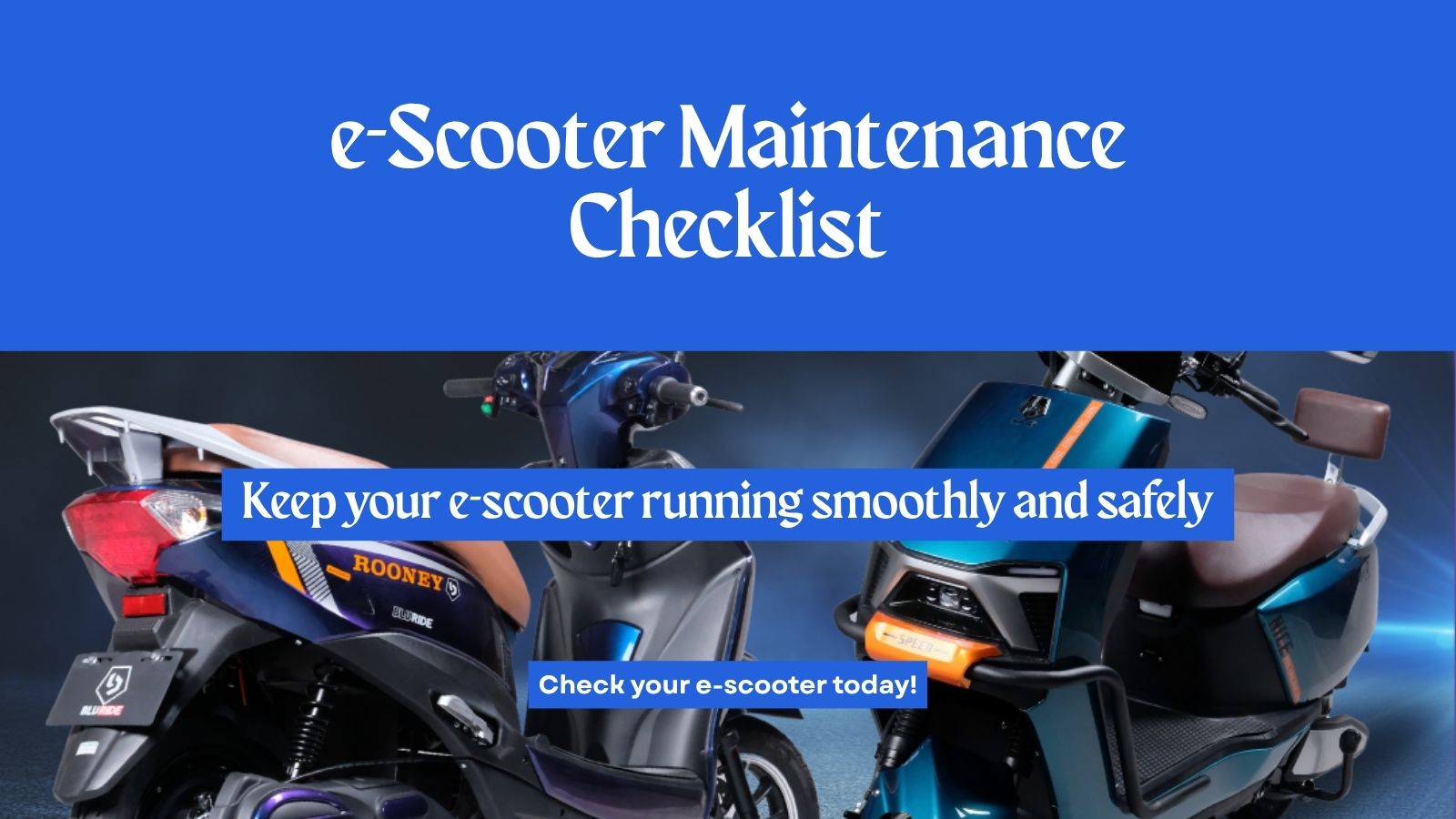Introduction
Your e-scooter is more than just a ride — it’s your daily companion, your shortcut through traffic, your eco-conscious lifestyle choice. They have rapidly become a popular and efficient means of urban commuting. Whether you’re using one for daily travel, delivery services, or leisure rides, maintaining your e-scooter is crucial to ensure performance, safety, and durability. But even the smartest, sleekest electric scooter needs a little attention to keep it gliding smoothly. Just like any vehicle, regular maintenance can prevent breakdowns, improve efficiency, and extend the lifespan of your ride.
Whether you’re weaving through city streets or cruising casually, regular maintenance is what keeps your e-scooter dependable and delightful. In this guide, we break down the ultimate care routine into monthly, yearly, and long-term checklists, ensuring your e-scooter remains in top condition for years to come and further helping you stay ahead of issues and on top of your ride’s performance. Let’s keep those wheels spinning — smartly, safely, and sustainably.
Monthly E-Scooter Maintenance Checklist
- Battery Health Check
- Inspect the battery for signs of swelling, overheating, or damage.
- Ensure it is charging properly and holding a charge.
- Clean the battery terminals if accessible.
- Avoid deep discharging; keep the charge between 20%-80% for best health.
- Tire Inspection
- Check for proper tire pressure (as per manufacturer’s recommendation).
- Look for cracks, wear, or embedded objects.
- Ensure the wheels rotate smoothly and are aligned.
- Brake System Test
- Inspect both mechanical and electronic brakes for responsiveness.
- Adjust brake cables or pads if needed.
- Clean brake components and ensure they’re not worn out.
- Lights & Display Panel
- Ensure headlights, tail lights, and brake lights are functioning.
- Check for display errors or warning indicators.
- Suspension & Steering
- Test suspension for smooth operation and check for leakage in shocks (if applicable).
- Ensure the handlebars and steering column are tight and wobble-free.
- Frame & Body Check
- Look for cracks, dents, or rust on the frame.
- Clean your scooter using a damp cloth; avoid water near electrical components.
- Loose Bolts & Connections
- Tighten any visibly loose bolts, nuts, or screws.
- Ensure wiring harnesses are secure and not frayed.
Yearly E-Scooter Maintenance Checklist
- Comprehensive Battery Testing
- Perform a deep health diagnostic using a voltmeter or a professional service.
- Consider battery calibration if performance seems reduced.
- Tire Replacement (If Needed)
- If the tread is worn or the tires show signs of aging, replace them.
- Balance wheels if experiencing vibrations.
- Brake Pad Replacement
- Most brake pads will need replacement after a year, depending on usage.
- Upgrade to higher-quality pads if your rides are frequent or hilly.
- Bearing and Axle Check
- Clean and lubricate wheel bearings.
- Check axles for signs of bending or wear.
- Motor Inspection
- Clean the motor casing and inspect for overheating signs.
- Listen for abnormal sounds indicating internal issues.
- Firmware/Software Updates
- Update your scooter’s firmware via app or service center.
- Reset factory settings if you notice performance lag.
- Professional Tune-Up
- At least once a year, have your e-scooter checked by a certified technician.
- This ensures hard-to-spot issues are addressed professionally.
Long-Term E-Scooter Care (Every 2–3 Years)
- Battery Replacement
- Most lithium-ion batteries degrade after 500–1000 charge cycles.
- If you notice a significant drop in range or charging issues, it may be time to replace the battery.
- Controller and Wiring Audit
- Inspect the controller unit for internal corrosion or malfunction.
- Replace aging wires, especially those near hinges and folds.
- Chassis & Frame Overhaul
- Check for fatigue in the metal frame or rust in hidden areas.
- Repaint or treat surfaces to avoid long-term corrosion.
- Motor Service or Replacement
- In high-use scenarios, motors may begin to underperform.
- Seek professional cleaning or consider replacing if power drops.
- Shock Absorbers & Suspension System
- Replace suspension components if they feel less responsive or show leakage.
- Upgrade to better shocks if comfort has become an issue.
- Upgrade Safety Gear
- Replace helmets, reflectors, and lights as needed.
- Consider smart accessories like anti-theft alarms or phone holders.
Additional Tips for E-Scooter Longevity
- Storage: Store in a dry, shaded area away from extreme temperatures.
- Charging: Use only the manufacturer’s charger. Avoid overnight charging regularly.
- Riding Style: Avoid aggressive riding; gentle acceleration extends component life.
- Weather Protection: Use waterproof covers if parking outdoors.
- Clean Regularly: Dust and grime can corrode parts over time.
Conclusion
E-scooter maintenance isn’t just about avoiding breakdowns; it’s about optimizing performance, ensuring rider safety, and protecting your investment. By following this structured checklist — monthly, yearly, and long-term — you can extend the life of your electric scooter and enjoy a smoother, worry-free ride. Whether you’re a daily commuter, a delivery rider, or a weekend cruiser, regular care goes a long way in keeping your scooter road-ready.
Stay safe, ride smart, and keep those wheels turning!








Leave a reply